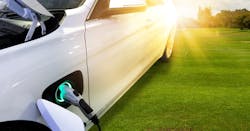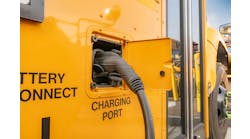Demand for electricity will increase 62% though 2050, driving $13.3 trillion in new investment, as the world increasingly pursues electrification of buildings and transportation, according to a new report by BloombergNEF.
“The New Energy Outlook 2019” (NEO 2019) forecasts a 12 TW expansion of generating capacity, of which renewables make up 77%.
The rise in renewables comes as prices continue to fall. The report finds wind and solar to be cheapest resources across more than two-thirds of the world. By 2030 BloombergNEF expects renewables to be cheaper than coal and gas almost everywhere.
“Our power system analysis reinforces a key message from previous New Energy Outlooks — that solar photovoltaic modules, wind turbines and lithium-ion batteries are set to continue on aggressive cost reduction curves, of 28%, 14% and 18% respectively for every doubling in global installed capacity,” said Matthias Kimmel, NEO 2019 lead analyst.
As a result, wind will account for $5.3 trillion and solar $4.2 trillion of the $13.3 trillion the report forecasts in new electric investment.
The report also envisions an increasingly decentralized grid, a trend driven by consumers as they gravitate to rooftop solar and behind-the-meter batteries.
Analysis of 100% electrification
For the first time in its annual outlook, BNEF considers a world where electricity provides 100% of the energy for transportation and residential buildings. To meet the 100% electrification goal, three times more generation would need to be installed in 2050 than is available today.
A world economy fueled by 100% electrification, with about half from renewable energy, would lower economy-wide emissions significantly. However, to meet carbon goals for the long term, it’s important that the world cultivate additional low-carbon technologies, possibly nuclear, biogas-to-power, green hydrogen-to-power and carbon capture and storage, the report said.
But at least until 2030, renewable growth, alone, should ensure that the power sector contributes its share toward keeping global temperatures from rising more than 2 degrees Celsius — and do so without additional subsidies.
In fact, Elena Giannakopoulou, head of energy economics at BNEF, said that the need for direct incentives, such as feed-in tariffs, is coming to an end.
Reform needed of power markets
However, Giannakopoulou added that to achieve de-carbonization other policy changes are needed, “namely, the reforming of power markets to ensure wind, solar, and batteries are remunerated properly for their contributions to the grid. NEO is fundamentally policy-agnostic, but it does assume that markets operate rationally and fairly to allow lowest-cost providers to win.”
An executive summary of the report is available free of charge here.
Track news about electrification of transportation and buildings. Subscribe to the free Microgrid Knowledge newsletter.







